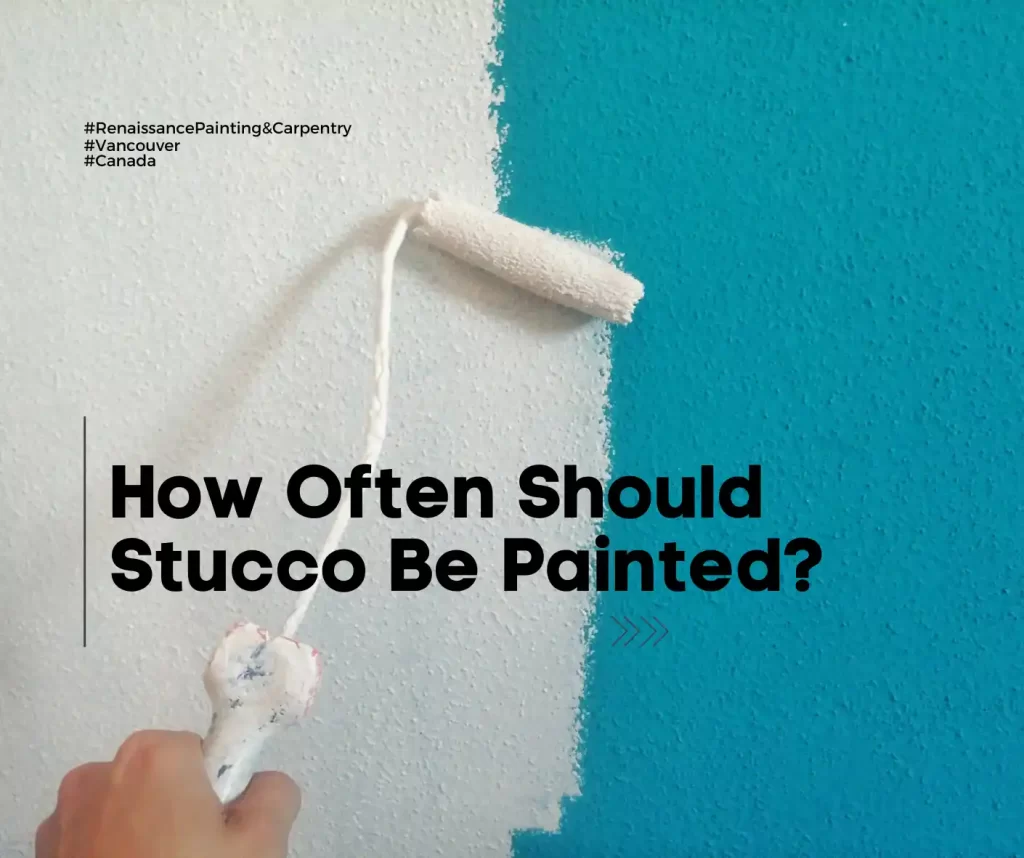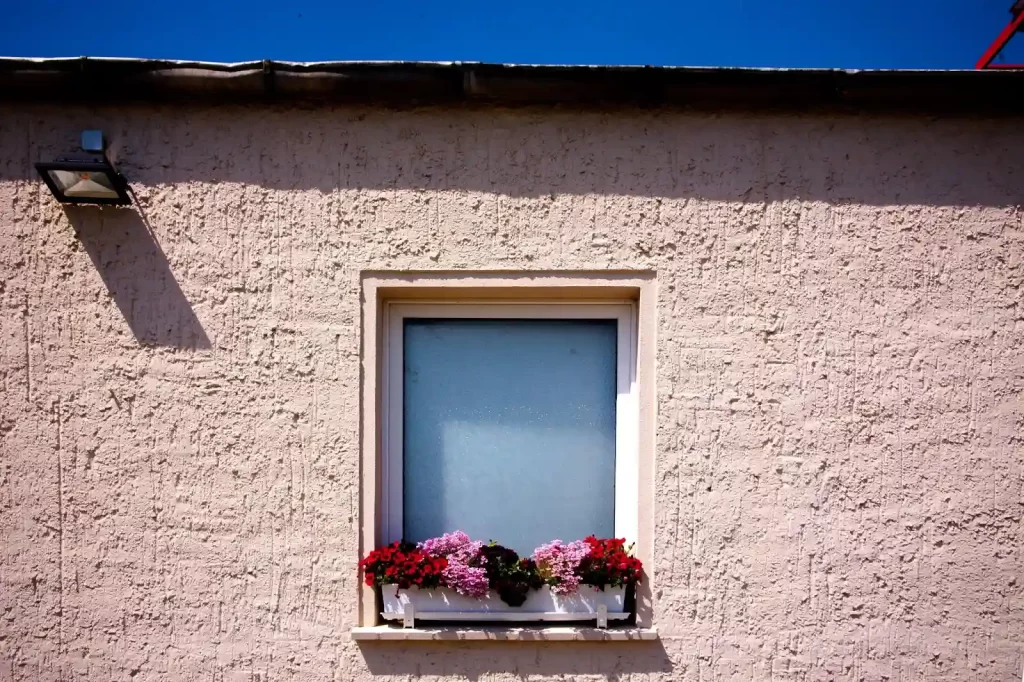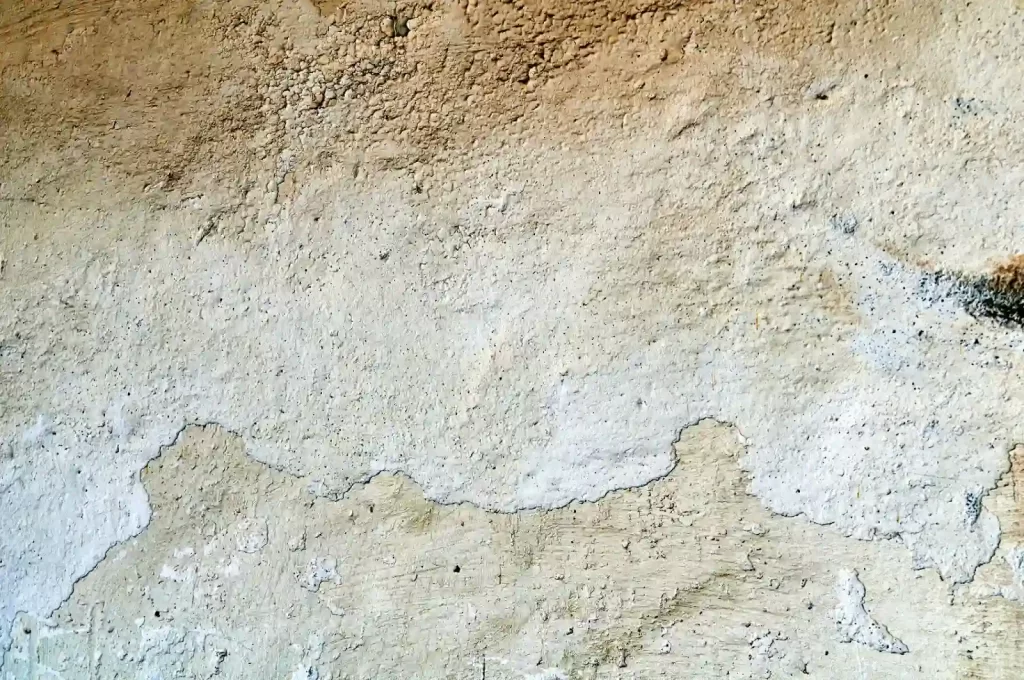
Stucco, a popular choice for home exteriors, has found its place in many Vancouver residences thanks to its durability, low-maintenance nature, and timeless elegance. However, even the most resilient exteriors need a bit of maintenance from time to time, and painting stucco is a key part of this upkeep.
Read to learn the ideal stucco paint schedule, plus signs that your stucco exterior walls are ready for a fresh coat of paint.
How Often Should Stucco Be Painted?
In most cases, we advise repainting stucco home every 10 to 12 years.
Given Vancouver’s damp weather, most homeowners might even find themselves on the shorter end of that scale, closer to every 5 years.
The Importance of Repainting Stucco
We already discussed the benefits of painting stucco, and repainting exterior stucco offers the same advantages. Here’s a quick run-through:
- Protection
Vancouver’s climate, with its wet winters and dry summers, can pose challenges to any type of home exterior paint. This is particularly true for painted stucco walls. It’s incredibly resilient, but because it’s so porous, it’s more vulnerable to the elements than other types of siding.
The right paint acts as a protective layer, guarding your stucco against water damage from high moisture, UV radiation, and temperature fluctuations.
In essence, painting your stucco is akin to applying a shield against weathering, prolonging the lifespan of the stucco, and by extension, your home.
- Visual Appeal
The beauty of a stucco exterior lies in its timeless elegance, but over time, even the most vibrant stucco siding will eventually fade and lose its lustre. Interior and exterior painting for stucco homes is a simple yet impactful way to restore that vibrance.
It’s also a sound investment in your property’s curb appeal, particularly if you’re contemplating selling your house in the future.
- Identifying Damage
Painting stucco homes is an opportunity to closely inspect your home’s exterior. Prior to painting, for example, we carefully examine the stucco for both large cracks and small cracks that may not have been visible from a distance.
By identifying and addressing these issues early on, you can prevent minor problems from turning into costly repairs later, saving you both time and money.
5 Factors that Affect How Often Stucco Needs to be Painted

While repainting stucco every 10 to 12 years is a good guideline, this interval can change based on the following factors:
- Climate
The local climate is one of the most significant factors that can affect how often stucco needs to be painted.
In areas with a harsh climate — heavy rainfall, intense sun, or dramatic temperature fluctuations — the paint on stucco might wear down more quickly, necessitating more frequent repaints.
For example, in a city like Vancouver, with its rainy weather and damp climate, stucco exteriors might require less regular painting compared to homes in more arid climates. This is because hot dry climates bake the paint and cause it to wear down.
- Paint Quality
Poor quality stucco paint = poor results. High-quality, acrylic masonry paints are typically more resistant to fading and weathering, which means they can last longer before needing a refresh. This is true for elastomeric paint or elastomeric coatings as well.
The quality of the previous paint job is a big factor, too. Was it a fantastic job by professional painters, or was it DIY? Many homeowners underestimate the importance of stucco painting, especially the amount of prep work that goes into it.
- Stucco Condition
If your stucco was not properly installed, or if it’s old and has been subjected to years of weathering without adequate maintenance, it may need to be painted more frequently.
Regularly maintaining your stucco and addressing any damage or issues promptly can extend the lifespan of your paint job.
- Exposure
How exposed is your stucco to the elements? For example, if your home is in an area that gets a lot of direct sunlight with minimal shade, the UV rays can cause the paint to fade more quickly.
Similarly, if your home is exposed to high levels of pollution – like near main roads – the paint may deteriorate faster.
Got an oceanfront property? Salt air is extremely harsh on paint, so don’t be surprised if you need to paint your stucco sooner than you expect.
- Stucco Paint Colour
Surprisingly, the colour of the paint can also play a role. A dark color absorbs more heat and can fade faster under direct sunlight compared to a lighter exterior color.
Therefore, if you have a dark-coloured stucco, you might find yourself needing to repaint it more often than if you had chosen a lighter shade. Certain colours, such as teal, are prone to fading.
5 Signs Your Stucco is Due for a Repaint

Finally, repainting stucco should be done as a proactive measure. The earlier you do it, the fewer stucco repairs you need to deal with. Look for these signs:
- Fading and Discouloration
If your stucco is looking less vibrant than it used to be or if you notice uneven patches of colour on your exterior, it’s likely time for fresh paint.
- Cracks or Damage
Stucco is durable, but it’s not invincible. Natural wear and tear can lead to the development of small hairline cracks or chips in the surface over time. Failing to fill larger cracks – even small ones – can accelerate moisture damage and compromise the stucco.
If you notice these, plan for stucco patching and other necessary repairs, then a repaint soon after.
- Peeling Paint
This is perhaps one of the most evident signs your stucco needs a repaint. If the paint on your stucco house is peeling, flaking, or chipping off, a new coat of paint is overdue.
This kind of deterioration indicates the breakdown of the previous paint job, leaving your stucco vulnerable to environmental elements.
- Efflorescence
This term refers to a white powder that can appear on your home’s stucco. It’s the result of water evaporating from the stucco, leaving behind salt deposits that can appear as white streaks.
Efflorescence is not just an aesthetic issue — it indicates that water is penetrating your stucco, which can lead to more serious issues like mould and structural damage if not addressed promptly.
Book a FREE Consultation re: Painting Stucco
Stucco, with its robust and versatile nature, can indeed stand the test of time, but only with the right care and attention. Whether you’re considering painting your stucco or need help with stucco maintenance, don’t hesitate to reach out to us.
At Renaissance Painting, your home is our canvas. We’re more than happy to offer a free exterior painting consultation and guide you through the process to ensure your home remains the jewel of the neighbourhood.
BOOK YOURS NOW, and we’ll get back to you shortly!
FAQs
How long will painted stucco last?
On average, a high-quality paint job on stucco (with at least two coats) can last between 10 to 12 years, or even longer in ideal conditions.
Is it OK to not paint stucco?
Technically yes, it’s OK not to paint stucco. But given all the benefits of doing so, painting stucco makes more sense than leaving it bare.
How long does stucco last on a house?
Stucco is a very durable material. With proper installation and maintenance, it can last anywhere from 50 to 80 years, and easily up to 100 years or more.
How often should stucco be sealed?
Stucco should be sealed, aka painted, approximately every 10 to 12 years. Sealing provides an extra layer of protection, helping to ward off damage from water and other elements.

